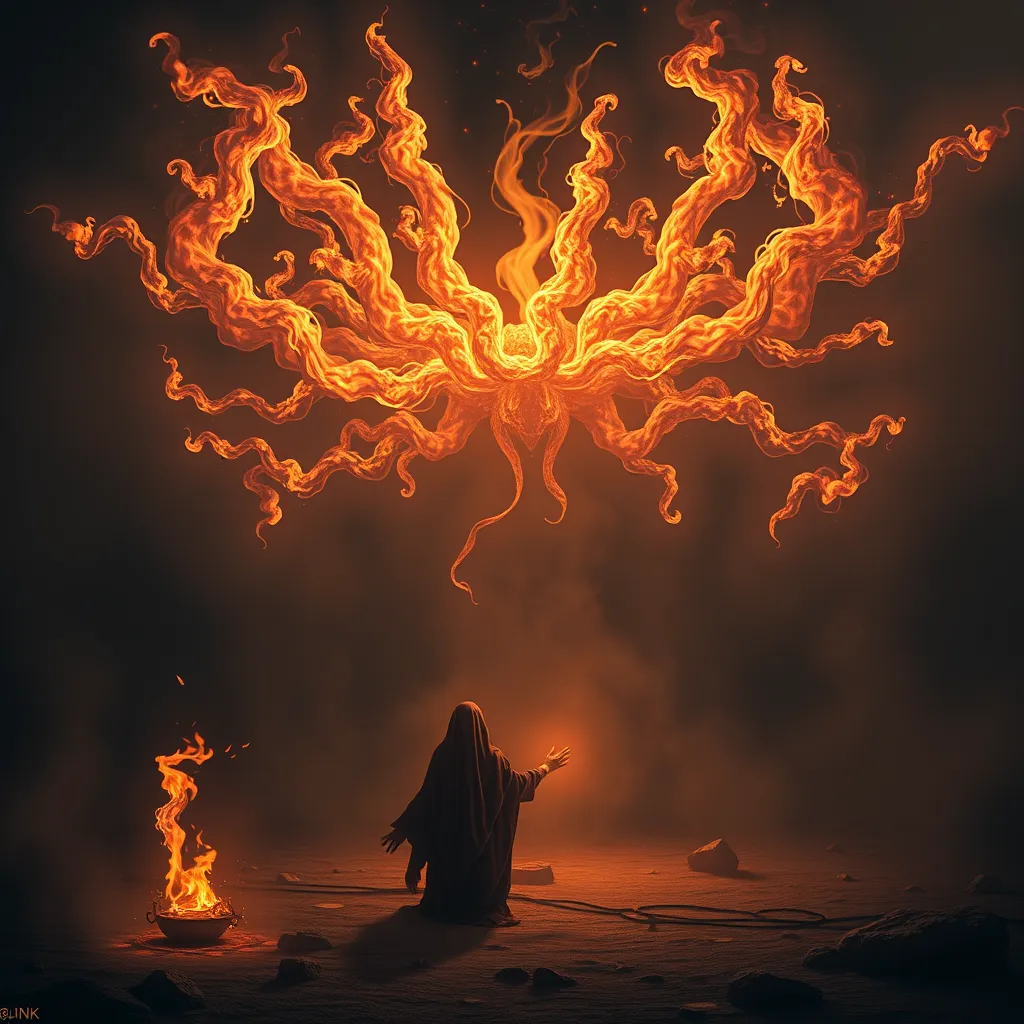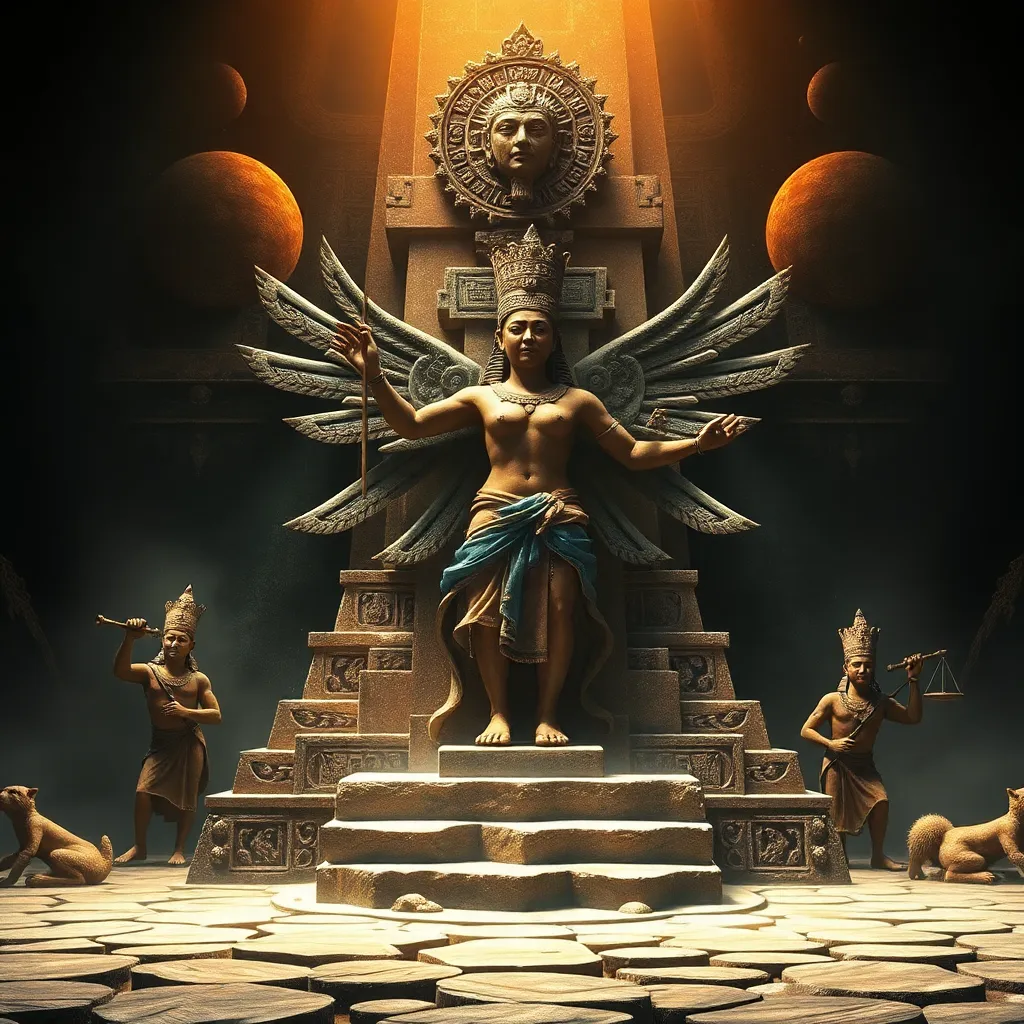The Hydra and the Dragon: Comparing and Contrasting Two Iconic Mythological Creatures
I. Introduction
Mythological creatures have fascinated humans for centuries, serving as symbols of various concepts and values. Among these, the Hydra and the Dragon stand out as two of the most iconic figures in mythology.
These creatures, despite their differences, have played crucial roles in the folklore of numerous cultures around the world.
Understanding their origins, characteristics, and symbolism reveals much about human nature and societal values throughout history.
II. Origins and Historical Context
A. The Hydra: Greek mythology and its significance
The Hydra is a serpentine water monster from Greek mythology, known for its multiple heads and regenerative abilities.
Originating from the marshes of Lerna, this creature was infamous for its ability to regrow two heads for every one that was cut off.
The Hydra was ultimately slain by Heracles during his second labor, symbolizing the struggle against insurmountable odds.
B. The Dragon: A global perspective (Eastern vs. Western dragons)
Dragons appear in various forms across global mythologies, with significant differences between Eastern and Western interpretations.
In Eastern cultures, such as Chinese mythology, dragons are often seen as benevolent creatures representing strength, good fortune, and control over water.
In contrast, Western dragons are typically depicted as malevolent beasts, associated with chaos and destruction.
C. The evolution of their representations in different eras
Over time, both creatures have transformed in their representations.
The Hydra has been depicted in numerous artistic forms, evolving from a fearsome monster in ancient art to a more stylized figure in modern adaptations.
Similarly, dragons have transitioned from fearsome adversaries in medieval tales to heroic figures in contemporary literature and film, reflecting changing societal attitudes toward power and nature.
III. Physical Characteristics
A. Description of the Hydra (multiple heads, regenerative abilities)
The Hydra is typically represented as a large, serpentine creature with numerous heads—usually depicted as having five or more.
Its most notable feature is its ability to regenerate, making it a formidable opponent.
As one head is severed, two more grow in its place, symbolizing the idea that some challenges cannot be easily overcome.
B. Description of dragons (size, scales, wings, fire-breathing)
Dragons vary widely in size, often depicted as colossal creatures covered in scales that shimmer in various colors.
Many dragons feature powerful wings, allowing them to soar through the skies.
A common characteristic is their fire-breathing ability, which adds to their fearsome reputation.
However, some dragons, particularly in Eastern traditions, may not breathe fire but are associated with water and storms instead.
C. Variations in appearance across cultures
- Eastern Dragons: Long, serpentine bodies, no wings, and often depicted with antler-like horns.
- Western Dragons: Stocky bodies, large bat-like wings, and typically more reptilian in appearance.
- Hydra: Generally portrayed with a scaled body, multiple heads, and often depicted emerging from water.
IV. Symbolism and Meaning
A. The Hydra as a symbol of chaos, danger, and resilience
The Hydra embodies chaos and danger, representing the idea that some problems seem to multiply the more one tries to tackle them.
Its regenerative abilities also symbolize resilience, suggesting that overcoming obstacles often requires persistence and ingenuity.
B. The Dragon as a symbol of power, wisdom, and protection
Dragons are often seen as embodiments of power and wisdom.
In many cultures, they guard treasures and sacred places, representing the protective aspects of nature.
In Eastern traditions, dragons symbolize auspiciousness and are often associated with imperial authority.
C. The contrasting values associated with each creature
While the Hydra represents chaos and the struggle against overwhelming adversity, dragons often symbolize order, strength, and the protective forces of nature.
This contrast highlights the duality in mythological storytelling—the struggle between chaos and order in human experience.
V. Role in Mythology and Folklore
A. The Hydra’s role in Greek myths (Heracles and the Twelve Labors)
In Greek mythology, the Hydra plays a pivotal role in the story of Heracles.
Slaying the Hydra was one of his Twelve Labors, representing a significant challenge that tested his strength and cunning.
The labor highlights themes of heroism, perseverance, and the confrontation of seemingly insurmountable challenges.
B. Dragons in various mythologies (Chinese auspiciousness, European malevolence)
Dragons appear in a multitude of mythologies.
In Chinese culture, they are associated with rain, rivers, and good luck, often celebrated in festivals and art.
Conversely, in European folklore, dragons are typically seen as malevolent forces to be vanquished by heroes, illustrating the cultural perceptions of nature and its dangers.
C. Common themes and narratives involving both creatures
Both the Hydra and dragons often serve as challenges for heroes, embodying the themes of struggle and triumph over adversity.
They also reflect the human experience of facing fears—whether it be the chaos represented by the Hydra or the power represented by dragons.
VI. Cultural Impact and Representation
A. The Hydra in literature, art, and modern media
The Hydra has inspired countless works of literature and art, from ancient sculptures to modern films and video games.
Its image often appears in contexts that emphasize struggle, such as in fantasy novels and movies where heroes must confront overwhelming odds.
B. Dragons in popular culture (films, games, and literature)
Dragons have become staples in popular culture, often depicted as majestic and wise creatures in films like “How to Train Your Dragon” or as fierce adversaries in series like “Game of Thrones.”
Their multifaceted representations continue to captivate audiences, showcasing their versatility in storytelling.
C. The enduring legacy of both creatures in storytelling
Both the Hydra and dragons have left indelible marks on storytelling across cultures.
Their qualities and narratives facilitate explorations of human fears, ambitions, and the eternal struggle between chaos and order, ensuring their relevance in contemporary culture.
VII. Psychological Interpretations
A. The Hydra as a metaphor for challenges and fears
Psychologically, the Hydra can represent the various challenges and fears individuals face in their lives.
Just as cutting off one head leads to the growth of two more, confronting a singular fear may lead to new ones, symbolizing the complexity of human psychology.
B. The Dragon as a representation of ambition and power
Dragons often symbolize ambition and the pursuit of power.
They can represent the drive to achieve greatness and the potential dangers that accompany such pursuits, reflecting the dual nature of ambition as both a motivating force and a potential source of destruction.
C. How these interpretations resonate with human experiences
The interpretations of both creatures resonate deeply with human experiences, providing metaphors for the challenges we face and the ambitions we aspire to.
They remind us of the complexities of our desires and fears, making them timeless figures in psychological exploration.
VIII. Conclusion
In summary, the Hydra and the Dragon serve as powerful symbols within mythology, each representing distinct aspects of human experience.
From their origins and physical characteristics to their cultural impact and psychological interpretations, these creatures continue to fascinate and inspire.
Their relevance in contemporary culture speaks to our ongoing fascination with mythological beings and the lessons they impart about resilience, power, and the eternal struggle between chaos and order.
![]()


